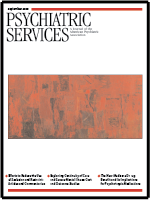I rarely part with books. But it's much easier to give away books that one has actually read, which is the nice thing about accepting books for review. Treating Generalized Anxiety Disorder: Evidence-Based Strategies, Tools, and Techniques is a quick and satisfying read. The authors point out that generalized anxiety disorder really came into its own with DSM-III-R as far as having distinct diagnostic criteria, with the focus then and in DSM-IV on worry as the central symptom. I went to look for my copy of DSM-III and couldn't find it. Then I remembered that I lost it in the year DSM-III-R came out, at my oral board exam. I hadn't prepared for the exam: I took the copy of DSM-III that I had owned since my internship year, to cram, and shoved it in a drawer in a county hospital. It was gone when I came back for it. I flunked. I never thought much about generalized anxiety disorder in those days, and not that much since.
Panic and agoraphobia, those were the anxiety disorders DSM-III put on the map—crisp, specific criteria that patients in the early 1980s felt relieved to discuss, the nugget in the swamp of anxiety neurosis as the age of psychoanalysis came to an end. Generalized anxiety disorder seemed like the leavings of nonpanic, nonphobic anxiety. Reading Treating Generalized Anxiety Disorder gave me a new appreciation of the disorder as something other than just a residual category and of the usefulness of having a variety of documented cognitive and behavioral techniques to address the central problem in the disorder, the avoidance of affect through worry, checking, and restricted behavior.
The first four chapters succinctly but thoroughly discuss cognitive-behavioral theories of anxiety and summarize treatments, treatment planning, assessment, and engagement. The last two-thirds of the book reviews in four chapters the evidence-based cognitive-behavioral therapy treatments for the cognitive, physiological, and behavioral symptoms of generalized anxiety disorder and other treatment techniques, such as the mindfulness training that Linehan developed for dialectical behavior therapy, which have not yet been confirmed to be effective for generalized anxiety disorder but which are suggested as supplemental if diagnosis-specific techniques do not suffice.
The book includes many useful handouts and tables; the various techniques seem to have been appropriately attributed. Part of the text is a narrative of a model treatment that usefully illustrates some of the techniques. This book could help multi- and transdisciplinary teams to come to consensus about interventions for anxiety and depression in primary care. Given the relatively few specialty mental health practitioners who actually provide these evidence-based treatments reliably, primary care and managed care systems may be able to use parts of this accessible book to encourage increased clinician awareness of generalized anxiety disorder as a meaningful diagnostic entity and promote fidelity to proven treatment models while thinking about ways to improve patient self-management. I think it would be very useful for clinicians in training, and for "eclectic" clinicians like myself who need a well-founded but brief review of cognitive-behavioral principles and practices to bring us back up to speed on this important modality.

